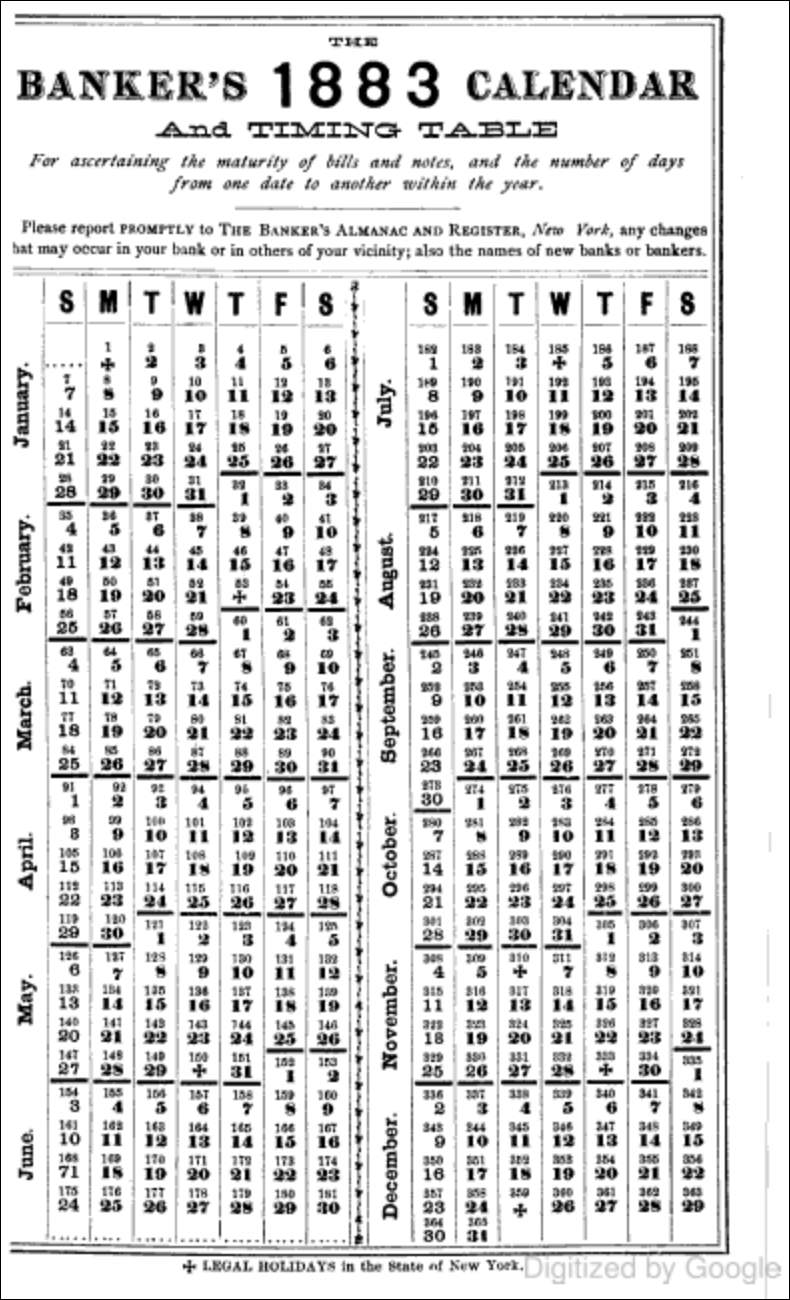Calendrical Tools
Calendrical tools for reckoning time.

This project is maintained by rn123
Calendrical tools for reckoning time.

This project is maintained by rn123
16 Jan 2020 - Ray
The Banker’s Almanac and Register published calendars in the late 1800s formatted as stacks of weeks similar to Seah’s candybar calendars and the format used by Reingold & Dershowitz. This format is illustrated in the chapter on the ISO Calendar. In their book, Reingold & Dershowitz point out that their only reference is for the ISO Standard ISO 8601:2000(E).

A calendar week is identified within a calendar year by the calendar week number. This is its ordinal position within the year, applying the rule that the first calendar week of a year is the one that includes the first Thursday of that year and that the last calendar week of a calendar year is the week immediately preceding the first calendar week of the next calendar year.
NOTE 1 These rules provide for a calendar year to have 52 or 53 calendar weeks;
NOTE 2 The first calendar week of a calendar year may include up to three days from the previous calendar year; the last calendar week of a calendar year may include up to three days from the following calendar year;
NOTE 3 The time-interval formed by the week dates of a calendar year is not the same as the time-interval formed by the calendar dates or ordinal dates for the same year. For instance: — Sunday 1995 January 1 is the 7th day of the 52nd week of 1994, and — Tuesday 1996 December 31 is the 2nd day of the 1st week 1997.
NOTE 4 The rule for determining the first calendar week is equivalent with the rule “the first calendar week is the week which includes January 4”.